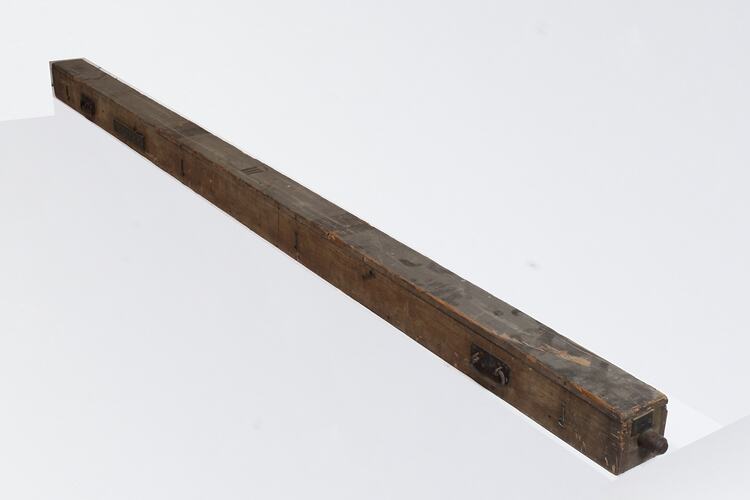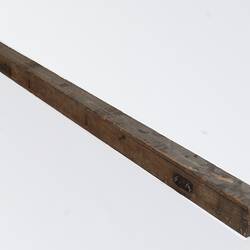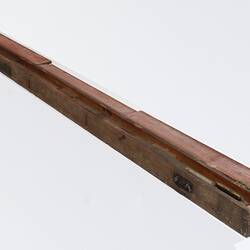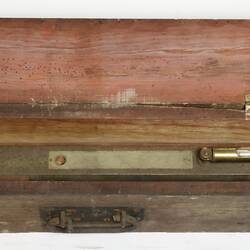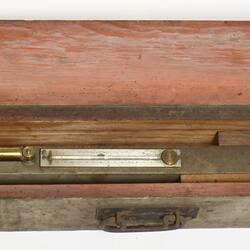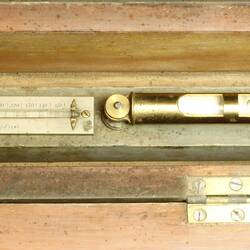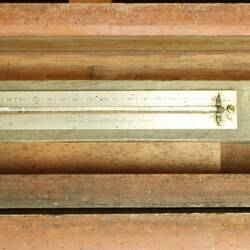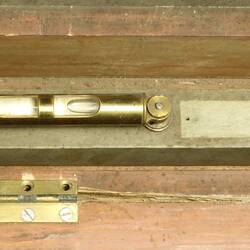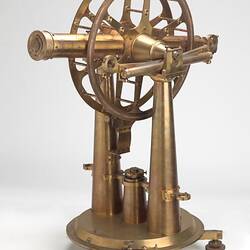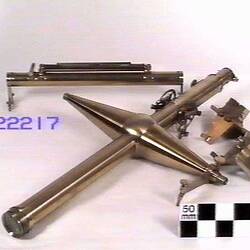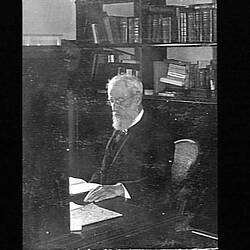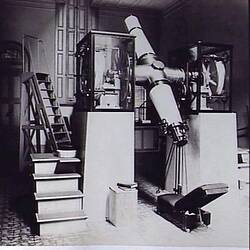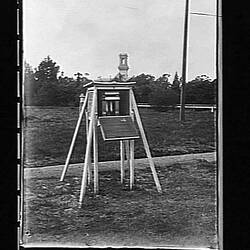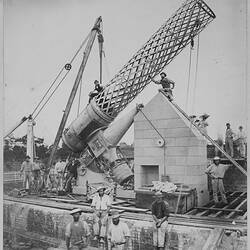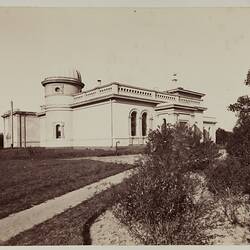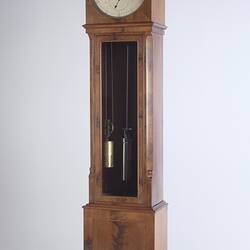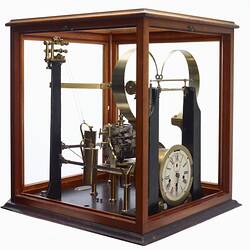Summary
Three iron measuring rods used in the Geodetic Survey of Victoria in the 1860s. The measuring rods were used to measure accurately a base line of approximately 5 miles near Werribee. Directed by Government Astronomer Robert Ellery, the geodetic survey proceeded by triangulation from the base line and was completed in 1870. This precise survey of Victoria, taking into account the curvature of the earth's surface, provided the reference points for all subsequent surveys.
The measuring rods were made in Victoria against the New South Wales standard, which had been obtained from the Ordnance Survey in Southampton, England.
The South Base Stone and North Base Stone at Werribee are listed on the Victorian Heritage Register (H1957).
Physical Description
Each measuring rod has two levels and three thermometers (one thermometer missing on rods 'II' and 'III').
Significance
The measuring rods are historically significant for their use in measuring the base line for the Geodetic Survey of Victoria, which served as the basis for all subsequent government and commercial surveys, and facilitated the European settlement of the colony. The rods are scientifically and technologically significant as important examples of the application of geodetic survey work in the mid 19th century, and for their association with the work of Robert Ellery and the Williamstown and Melbourne Observatories.
The South Base Stone and North Base Stone at Werribee are listed on the Victorian Heritage Register (H1957).
More Information
-
Collection Names
-
Collecting Areas
-
Acquisition Information
Transfer from Melbourne Observatory, 1945
-
Maker
Mr Thomas Jones, 62 Charing Cross, London, Middlesex, England, Great Britain
-
User
Mr Robert Lewis John Ellery, Melbourne, Greater Melbourne, Victoria, Australia, 1860
-
User
Williamstown Observatory, Williamstown, Greater Melbourne, Victoria, Australia, 1860
-
User
Victoria: Geodetic Survey of Victoria, Werribee, Greater Melbourne, Victoria, Australia, 1860
-
Inscriptions
Thermometers marked 'Thomas Jones 62 Charing Cross London'. Wooden cases marked 'I', 'II' and 'III'.
-
Classification
-
Category
-
Discipline
-
Type of item
-
Overall Dimensions
305 cm (Length), 12 cm (Width), 14 cm (Height)
Dimensions of each case.
-
Keywords
